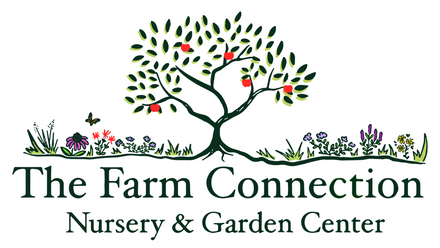Viburnum, Nannyberry, Bare Root
Edible Native Viburnum for Wildlife & Pollinators
Viburnum, Nannyberry, Bare Root - Bare Root / 6-18" Seedling is backordered and will ship as soon as it is back in stock.
Couldn't load pickup availability
Delivery and Shipping
Delivery and Shipping
Make sure to thoroughly review our entire "Shipping, Returns, Refunds, and Our Guarantee" page for all relevant details about ordering from our store.
Making a purchase from our store constitutes an agreement to all the conditions outlined in those policies.
We appreciate your support and look forward to being your favorite plant provider!
Subscribe to our newsletter
Sign up for exclusive offers.
Nannyberry Viburnum (Viburnum lentago)
Nannyberry is a versatile native shrub or small tree prized for its multi-season interest, high wildlife value, and adaptability to a wide range of conditions. Native to woodlands, streambanks, and thickets across eastern North America, Nannyberry produces fragrant white spring flowers, followed by edible, raisin-like berries and rich burgundy fall foliage. It’s an excellent choice for hedgerows, meadows, woodland edges, and pollinator gardens, especially where a low-maintenance, fruiting native shrub is desired.
Key Characteristics
-
Fruit for Birds, Wildlife, and Human Use
In late summer to fall, Nannyberry produces clusters of blue-black berries that persist into winter. Birds such as cedar waxwings, cardinals, and thrushes feed heavily on the fruit. The berries are also edible to humans, traditionally used to make jams, jellies, or eaten fresh when fully ripe. -
Pollinator-Friendly Blooms and Insect Support
Large, creamy-white flower clusters bloom in May, attracting a wide variety of native bees, syrphid flies, and butterflies. As a larval host plant for several moth species, including the Spring Azure, it supports key stages of insect life cycles. -
Tolerates Wet or Dry Soils with Ease
Naturally occurring in moist woodlands and streambanks, Nannyberry is surprisingly drought-tolerant once established. It grows well in medium-dry to medium-wet soils, making it ideal for ecological restoration, hedgerows, and erosion control. -
Multi-Stemmed or Single-Trunked Form for Flexible Use
Can be grown as a large shrub or trained into a small tree, reaching 12–18 feet tall. Its adaptability makes it perfect for layered plantings, native privacy screens, or as a specimen plant in larger gardens. -
Great for Native Hedgerows, Pollinator Gardens, and Stream Edges
Nannyberry integrates beautifully into wildlife corridors, streambank plantings, and food forest margins. It layers well with other native shrubs like elderberry, dogwood, and serviceberry to provide succession bloom and fruit throughout the seasons.
Product Details
- Native Range: Eastern and Central North America
- Plant Life Cycle: Deciduous shrub/small tree
- Sun Requirements: Full sun to part shade
- Soil Requirements: Medium-dry to medium-wet
- Mature Height: 12–18 feet
- Bloom Time: May
- Bloom Color: White
- USDA Hardiness Zones: 3–8
Nannyberry is a low-maintenance, high-impact native plant that offers beauty, biodiversity, and edible fruit. A must-have for hedgerows, meadows, and multi-layered wildlife gardens.
-
Sun RequirementsFull Sun, Part Sun/Shade
-
Soil RequirementsMedium-Dry, Medium-Wet
-
Bloom ColorWhite
-
Bloom TimeMay
-
USDA Hardiness ZonesZone 3, Zone 4, Zone 5, Zone 6, Zone 7, Zone 8
-
Native StatesMaine, Vermont, New Hampshire, New York, Pennsylvania, Ohio, Indiana, Illinois, Michigan, Wisconsin, Missouri, Kentucky, Tennessee, Virginia, West Virginia, North Carolina, South Carolina
Payment & Security
Payment methods
Your payment information is processed securely. We do not store credit card details nor have access to your credit card information.




